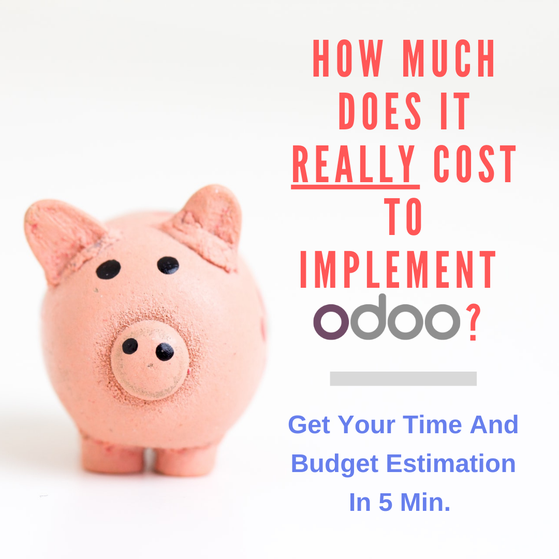Developing an eLearning course isn’t always a cut-and-dried science yet – here are 18 critical elements you need to know if you’re starting from scratch.
eLearning, or online learning as it sometimes goes by, is playing an increasingly central role in the academe, the corporate world, and the free market of ideas and information that is available online.
It’s what helps organizations get on top – and stay at the top of their game. After all, the best companies in the world rely on the best talent. And, in order to grow and create the best talent, organizations need to understand the role eLearning is going to play and how to harness it especially in the post-COVID landscape.
No question about it, eLearning will have a massive impact on businesses.
However, if you are just new to the concept of developing eLearning courses for whatever purpose they may serve, it can definitely be a tall task. We should know – we at Syncoria have been there and done that.
That said, once you decide to make the switch to eLearning, there are more than a few ways to achieve it in a manner that is apt for your company’s size, goals, and ambitions.
One of these options is outsourcing eLearning course development to a third party educational services designer, or otherwise purchasing an off-the-shelf iteration of it.
However, as we can see that you find yourself reading this article, you are most likely exploring the possibility of developing eLearning courses yourself or by empowering your employees to share their expertise by gathering their input and creating a body of knowledge for your organization.
Thing is, starting from scratch and trying to look for all the things you need in order to develop an eLearning course can already have you giving up in no time.
However, with these 18 elements, we show you a roadmap as to how to develop an eLearning course the right way, and break down the process into smaller, digestible chunks.
Who says that eLearning course development should be a tedious and arduous affair? Contrary to what you might have heard, following these guidelines can help you start from the right foundation, so that you can deliver a powerful and effective eLearning experience for your audience.
If you’re still at “square one” of your eLearning course development project, this will be a great place to start. Here it goes now.
The Essential Keys of Exceptional eLearning Course Development

You will have to follow some essential keys to ensure that you develop eLearning courses that your learners will love (particularly in the corporate setting).
It’s not complex at all.
Think of it this way: you’re taking on the role of the key developer, communicator, and designer that manages the team and shares progress and milestone completions with the customer. Your immediate task at hand is to listen to the customer and create an eLearning course from the bottom up.
1) Do Your Research
Once the topic has been chosen by your customer, you could expect them to introduce you to an SME – a subject matter expert. Instruct your experts to meet with the SMEs and hash out training topics and sections.
How are training processes carried out as they happen? Keep things as similar and as uniform as they possibly can, while constantly refining the process itself.
Think of these questions: how can the topics be taught in an interactive learning format for the audience? Highlight the content that needs to be further internalized and reinforced through interactive formats.
Next, it would be necessary to ascertain the technical resources that the customer readily has on hand. Does the customer have the infrastructure to carry out large-scale computer-based or web-based training programs?
Another key factor to consider in this phase is determining what type of Learning Management System (LMS) does the customer currently employ (or otherwise) in their organization? What course authoring tools integrate well, if any? This is where you would like to cover all the questions as regards compliance, Section 508, and SCORM issues, if applicable.
Research should be the bedrock from whence your project management processes are built from – and the same is true when it comes to developing eLearning courses.
Conducting haphazard or otherwise improper research is a surefire way to drive you off the right course and serve as a stumbling block against the success of your eLearning solution.
2) Discuss Expectations and Set Parameters Based on Instructional Needs
The next step is to understand and analyze the target audience and their needs with the client. This is when the instructional needs of the latter is determined.
Discuss the organization’s expectations and needs from the course. Determine the parameters and the coverage of the content that needs to be distilled into the eLearning course.
It is critical to focus on what the learner’s needs are in order to develop eLearning courses that actually make a lasting impact on the learner and his or her development and/or improvement in productivity.
3) Designing the Course
At this point in time, you’ve done your research on the previously-offered training, you’ve identified your audience’s needs…but are you 100% ready to get straight to the meat of the matter when it comes to the center of your eLearning course development?
No, not quite – there is a critical factor that you need to understand and address first.
And it’s in the form of a question. Namely, what are the prerequisites that your learning audience requires in the context of the course you are trying to develop for them?
Essentially, the ask is finding out what they already know about the subject, as well as determining any skills gaps that the training should address in order to complete. What are the objectives of the course and the required items according to the subject matter experts?
This is where creating the course outline is crucial. Create it, divide it into sections, and present it to both the subject matter expert and the customer for approval.
Documentation is important. Create a design document that shows how your audience will be interacting with the learning solution of your choice, as well as its themes, logic, navigation, and activities.
4) Develop a Prototype

Creating a prototype is necessary for your stakeholders to see and feel what exactly you are planning, as far as how the final course will actually look like.
Many instructional designers tend to skip a critical step in eLearning course development – particularly that of developing a prototype.
Here are some of the important tasks you’ll need to include as part of prototype development.
- Hire talent to create content and play roles in the course.
- Devise a draft script.
- Create content, run a photoshoot, record audio and video for characters and narrations.
- Produce graphics, sound effects, music, and video for the draft script.
5) Book a Test Drive
Now, this is where the rubber (initially) meets the road. Bring in your client and some prerelease learners to test this initial draft course. Gather their feedback and insights, and then integrate the proposed changes into the draft course as necessary.
6) Create a Storyboard/Script
Now, your eLearning course is starting to take shape. Create course content, scripts, and scenarios with the content you have developed. This would be a good time to highlight or reinforce the initial research you performed with the customer on step 1.
7) Create Engaging Media
Training courses that engage learners require the creation of media that actually engages. You essentially have the carte blanche to create engaging content by way of creating videos, graphics, photos, voiceovers, music and sound effects as you see fit.
Stretched for time or lacking resources to produce your own? You can subscribe to a media provider so that you can simply put together a course without having to worry about the production costs of making your own. You have options!
8) Put Together the Courseware
Create the courseware media in your chosen formats using your course authoring solution. Pay extra attention when developing your courseware, as this makes a big difference in how your audience actually put it to use.
9) Perform User Acceptance Testing
Never forget to test your course after you have finished designing and developing it! This is your chance to do a final review of the coursework and check for media quality, grammar and spelling errors, technical malfunctions, or glitches. Also make sure that the content adheres to organizational standards and practices. Make corrections based on your findings and more importantly, your customer’s feedback.
10) Customize the Learning Management System (LMS)
If you are developing a web-based LMS for your audience, then you will need to customize it accordingly such that it runs perfectly for your audience.
11) Develop Documentation and Manuals
Documentation is key. And it needs to be written. Put together manuals for course administrators, users, and system administrators so that the objectives, expectations, and purpose (as well as its administration) is set out clearly from both the trainee, trainer, and IT perspective. Now would be a good time to meet your client with their system administrators and trainers.
12) Customer Courseware Beta Reviews
By now, you will have a draft of the courseware. At this point, this is where you submit and present the courseware for the customer to review. Note: this stage is crucial because it will determine how sooner or longer it will take to finish the project.
13) Perform Final Changes and Tests
Truly exceptional eLearning course development takes plenty of time and effort, trial and error, and testing, testing, and testing. If there are any corrections from the previous step, then now is the time to work on those changes stemming from the Beta Review.
14) Test Completed Course at Client’s Site
At this point, you will be submitting the completed course to the client for installation, testing, and deployment. Make sure that the course is configured and verified for full functionality and utility once the course has been delivered and deployed.
15) Install and Configure the LMS
Once testing is fully satisfied, it is then time to install and configure the web-based LMS or send out media to the users for computer-based LMS..
16) Train the Trainers
Training doesn’t stop there. The client’s staff and trainers may need to be trained to use the course as well as the LMS (if they aren’t already familiar with it).
17) Final eLearning Course Deployment
Almost there! Now, it is time to finally implement and advertise the eLearning course you have just developed. As always, feedback is crucial in every step of the process, so take note of any potential issues and constantly refine the eLearning course. The best eLearning courses are made great by small improvements – like almost anything in life!
18) Measure Milestones, ROI, and Perform Course Evaluation
All the investment you and your client make in developing eLearning courses will be for naught unless you step back and examine the results it has achieved for your business.
Harness the data and metrics that determine the efficiency of the eLearning course you developed by the LMS or by feedback from surveys. This will give you the necessary input for any potential issues so that you can improve the next version of the course.
Are you ready to take the plunge in developing eLearning courses?
These steps are a generic roadmap to developing eLearning courses. However, everything isn’t as simple as it may appear. Developing an eLearning course does take more than just the above steps. While they may serve as a great starting point, oftentimes it takes tremendous knowledge and dedication to give learners the chance to enhance their skills and productivity with a well-developed course. We at Syncoria wish you the best of luck in your eLearning endeavors.